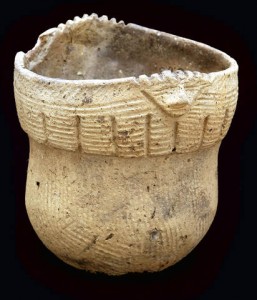
How are significant large landscapes eroded away? It usually does not happen overnight – the landscape character and heritage are lost acre by acre. But of some these losses are just more painful than others. Consider a recent example in the Lower Susquehanna Valley.
Although not yet well known, the Lower Susquehanna River in Pennsylvania is one of the great iconic landscapes in America. Those who care about its cultural and natural resource values have recognized the region as the Susquehanna Gateway State Heritage Area and as the Lower Susquehanna Conservation Landscape. It was also recently designated as part of the connector trail for the Captain John Smith Chesapeake National Historic Trail.
Today much of the Lower Susquehanna River landscape looks rural and scenic with scattered small towns, farms and summer cabins. However, it is also a landscape of power with three large hydroelectric dams harnessing the river flow. Much of the land along the river and many of the river islands, approximately 13,000 acres, is owned by utility companies.
This valley also has a nationally important story to tell. Before European contact, it was one of the most densely populated Indian settlements on the eastern seaboard. Over 3,000 people are estimated to have lived in just one the region’s large palisaded town known as the Washington Boro site. The natural environment supported intensive farming, hunting and fishing. Today a blue and gold state historical marker remembers the Washington Boro Archaeological Sites noting that This area contains one of the highest concentrations of archaeological sites in Pennsylvania. The sites range from small camps to large villages and cover 11,000 years of Native American culture.
Until recently land use change came slowly to this region. Then on July 1, 2012 an article appeared in the Lancaster paper that Safe Harbor Power Company was “quietly” selling land containing some of the most significant archeological resources in the country. They were selling what were essentially the front yards of the great Indian settlement of Washington Boro and selling its burial grounds. Caught off guard, conservation groups have scrambled to respond.
It does not have to be like this. The significance of the archaeological resources was well known and the power companies have been working with partners to save open land in the region. Hopefully, this story will have a positive ending and all parties will become more aware of the need to save this rich heritage.



One Response
Below is a letter to the Editor sent to the York Daily Record on 7/26/12
To the editor:
The Chesapeake region and the lower Susquehanna River basin are the birthplace of our national history. Here is where the first contacts between thousands of years of American Indian culture and English settlers played out, and no place is more important to this story than Washington Boro. This is why Secretary of Interior Ken Salazar recently extended the Capt. John Smith Chesapeake National Historic Trail to include the Susquehanna River, and why we are concerned about Safe Harbor Water Power Corporation’s plans to sell lands they own for development.
Washington Boro contains a record of civilization dating back 12,000 years. Four hundred years ago present day Washington Boro was one of the largest towns in the region, home to more than 2,000 Susquehannocks. When Capt. John Smith was exploring the Chesapeake, he met with a delegation of 60 Susquehannock leaders to learn about the lands that lay along the river to the north. He called them the noblest of the people he had met and his famous map bears an image of a Susquehannock warrior.
We believe it is vitally important to protect the landscapes that contain the history of the American Indians all around the Chesapeake and along her great rivers. We have worked with American Indian groups from Virginia to New York in an effort increase awareness of these sites and the importance of conserving them, so they, like other significant historical sites, can inform us about how we became the nation we are today.
We urge the executives of Safe Harbor to reconsider their decision to sell their lands at Washington Boro and to choose instead to find partners they can work with to conserve the land so the history and archaeological records they contain are protected forever for the public benefit.
Sincerely,
Joel Dunn
Executive Director, Chesapeake Conservancy
Sid Jamieson
Cayuga Nation, Iroquois Confederacy